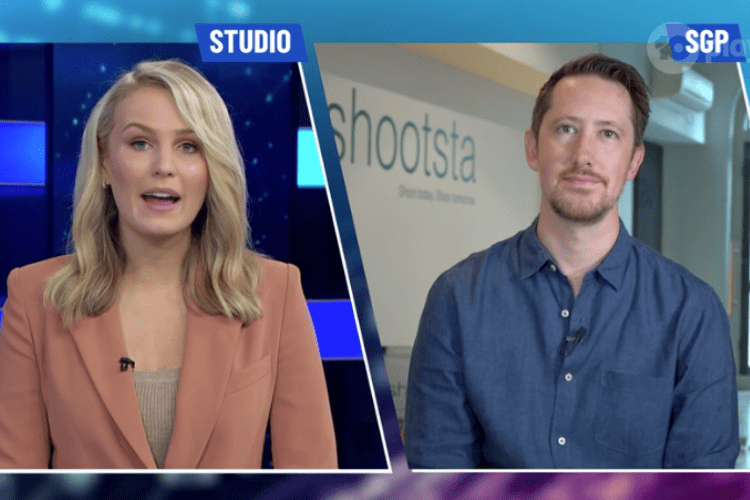In a recent event hosted by Shootsta, the topic of joint collaboration between both HR and Marketing teams were explored and what that means for organisations in the present time and in the future.
We were joined by our clients, PwC and BAE Systems who have truly transformed the way they communicate both internally and externally. Both clients have been using video as part of their communications strategy and shared how they have been working to drive an authentic message across the organisation. We were also joined by guest speakers from Tucker Stone and Wolff Olins to discuss the challenges they have seen HR and Brand leaders facing, whether they believed COVID has been driving the change, and how both departments can continue to help one another.
The event produced valuable insights and the 5 key takeaways have been outlined below.
1. Customers and employees are looking for greater support from businesses
Emma Woodhead White, Brand Strategy Director at Wolff Olins stated that there was a real need for audiences to feel heard and understood at the moment, and organisations that have created a sense of belonging and community in these times are seeing greater engagement.
Organisations are now having to take a more active role in supporting their teams and customers by looking at new ways to engage with them and taking a more active role to communicate about organisational change in a timely and empathetic manner.
A great example shared by Emma was from Discovery Inc. Discovery produced an internal community called ‘Alone Together’ which brought together people who were living on their own during the pandemic so they could have a support group around them, to connect, have fun, and share educational content to support them with the likes of homeschooling for those with children.

2. Purpose is the glue that unites both HR and Marketing
One of the biggest takeaways and an insight taken specifically from Olivia Stone, MD and Founder at Tucker Stone was the need for consistent messaging across the entire business, both internally and externally. A consistent voice, paired with consistent values creates far greater engagement for your audience.
The glue that seems to be holding us all together at the moment is purpose. If marketing, brand and HR departments can maintain the organisation’s core values at the heart of all communications, then both employees and customers can feel supported from all angles.
There is such a focus on maintaining company culture and meeting employees and customer expectations at the moment, that companies need to adapt the methods of communication to suit the environment of which they adapt to to maintain connectivity.
Rachel Lawrence, Employer Brand Operations Lead at PwC shared that the use of video has allowed them to communicate a job description clearly and effectively. By telling the story of a role from those employees that are in it themselves, allows external candidates to get a true representation of what the organisation is like to work for, whether the business actually reflects the values internally as well as from their shiny exterior and whether they could envision themselves working in that environment.

3. For a greater sense of belonging, humanise and brand HR initiatives
People, whether that’s your employees or customers are yearning for a sense of belonging. As organisations have been stripped back to working from home, the desire to work for a company that holds strong values has grown.
Rachel Lawrence at PwC shared that in the last year, their communications narrative has truly changed to become more human and culture-focused, rather than business and programme driven. This has been accelerated to ensure that the message future employees are receiving, matches the values-driven internally by the organisation.
Another great example shared at the event was from Emma Woodhead White about the company BrewDog. BrewDog is now the fastest growing Food and Beverage company in the UK and have a clear mission to make other people as passionate about craft beer as they are. It is this mission that leads all internal and external communications. Their internal initiatives have a brand lead influence and are unmistakably BrewDog from the inside out. For example, their vision doesn’t just stop at ensuring their beer is the best selling on the planet but is to ensure their workplace is the best place to work, ever. They also have what’s called the BrewDog Charter, a set of values they hire against and act against. One example is, ‘We bleed craft beer’ which is a really great example of the clear collaboration between Brand and the HR functions to encapsulate the magic between both departments for a stronger, more impactful brand.
4. Internal reactions in times of crisis speaks volumes
How organisations have adapted and reacted in times of crisis will be remembered. As we know, social media has pulled back the curtains on so many organisations from an employee perceptive, and now, organisations are under a magnifying glass like never before.
This has been hugely rewarding for those that have adapted and reinvented their approach in the last 12 months. An example of this from a production and external perspective is Estée Lauder as they joined others by using their manufacturing capabilities to produce hand sanitiser. By doing something that matters and by supporting the bigger purpose, has shown how adaptable, committed and creative businesses have become, which in turn leads to positive perceptions internally as well.
Another example of this is those that are supporting their employees and making public commitments and promises to ensure the support, whether that is unlimited parental leave or flexible working remains in place post-pandemic as well. These public promises, which are said in a timely and public manner, hold organisations accountable, which is a powerful message back to employees.
Shootsta have seen video being adopted regularly for this purpose across many different industries. An example of this was from Marriott International’s CEO Arne Sorenson as he addressed his associates last year at the height of the pandemic. The incredibly authentic and emotional response portrayed a connective and supportive message at a time when it was needed most.
5. Leaders need to become more open and visible
Leaders are taking a bigger role to support their teams in social situations as well as professionally, and this is something leaders need greater support with.
Being able to respond to change and crisis’, whilst conveying empathy is a challenge, but if this is done well, it can help to humanise a changing organisation which is important for both internal and external messaging.
This is a brilliant example of how both HR & marketing teams can help one another. Emma Woodhead White mentioned that, in broad terms, HR teams have been operations lead, but the next phase is to work with marketers to unleash creativity. Creativity can be in the form of ideas, approaches, execution and more, but is something that comes more naturally to brand teams. Getting creative with important leadership messaging can ultimately help engage, and enhance the employee experience and create greater cut through for messages that matter.
On the other hand, brand teams could do with greater authenticity to capture the spirit of an organisation in a greater sense. Since pandemic, organisations were somewhat reset on a level playing field, stripped of shiny camera equipment and resources, and had to get back to basics. We got firsthand insight into our leaders everyday environments and this has really humaised those we traditionally didn’t get access to.
Since COVID, Shootsta has seen companies adopt video at an astounding rate. Video breaks down the barriers to leaders and it allows organisations to convey a message with openness and with a greater sense of transparency. Dual Australia CEO, Damien Coates addressed their stakeholders not by sending out a letter, but by creating a video. By addressing stakeholders concerns, whether the answers are there or not, shows your customers and employees that the business is there, consistent and supportive.

Interested in simple, fast and effective video? Shootsta can help
To find out more about how we can help you with your video needs, please enter your details below. We’ll get in touch as soon as possible.



